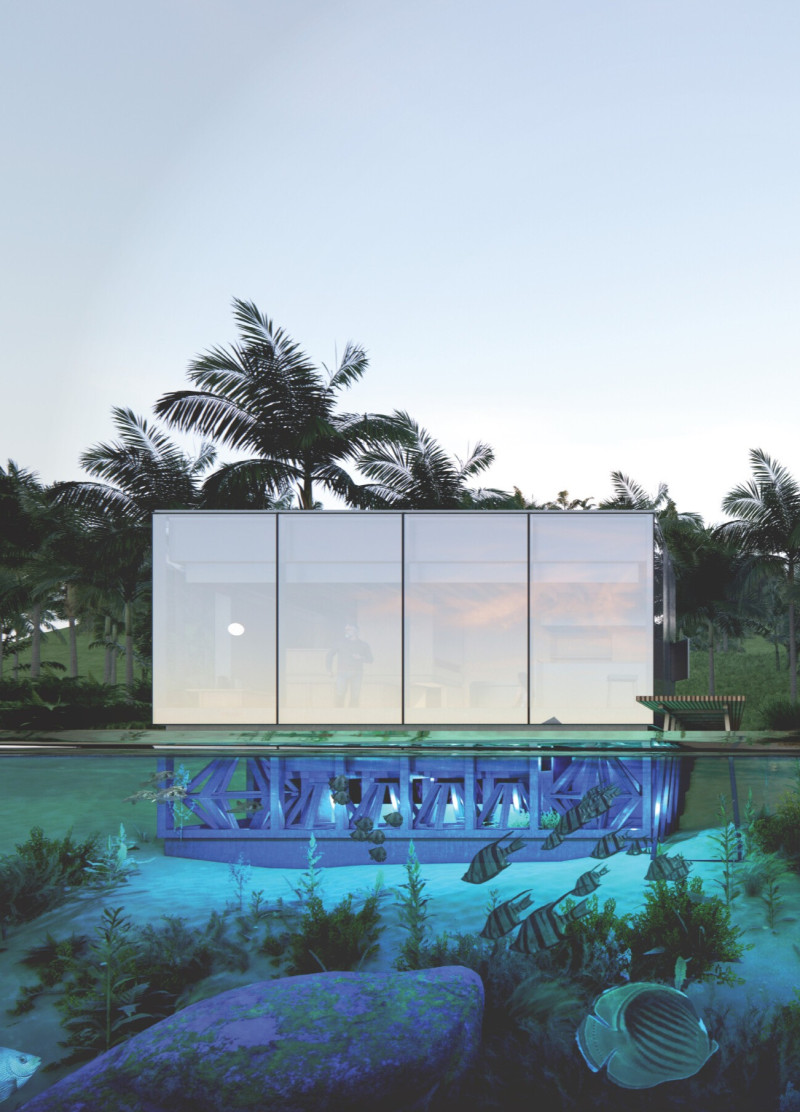5 key facts about this project
At its core, the project is designed to be a versatile space that caters to [specific functions, such as community gatherings, residential needs, educational purposes, or commercial activities]. The architectural layout reflects an understanding of the intended users, creating environments that are both inviting and practical. The arrangement of spaces maximizes usability while promoting interaction among occupants, ensuring that the building serves as a vibrant hub within its locality.
The design showcases a keen awareness of materiality. Employing a carefully selected palette that includes concrete, glass, steel, wood, and brick, the building achieves a balance between durability and warmth. Concrete provides structural integrity, while glass facilitates a connection with the outside environment, allowing natural light to permeate the interior. The use of steel elements adds a modern touch, showcasing a minimalist aesthetic that does not overshadow the surrounding landscape. Wood, strategically incorporated, offers a sense of nature indoors, fostering comfort and tranquility. The choice of brick, if included, not only contributes texture but also echoes local architectural traditions, reinforcing the project’s contextual relevance.
A key aspect of this project is its commitment to sustainable practices. The architectural design incorporates various green technologies that reduce energy consumption and promote an eco-friendly approach. Features such as strategically placed windows enhance natural ventilation and daylighting, minimizing reliance on artificial lighting and climate control systems. Attention to orientation ensures that the building takes full advantage of natural resources, optimizing energy efficiency throughout the year.
Unique design approaches are evident throughout the project. The integration of outdoor and indoor spaces facilitates a seamless transition that encourages users to engage with their surroundings. This blurring of boundaries is further enhanced by landscaping that complements the architecture, inviting occupants to explore the site fully. The careful manipulation of volumes creates dynamic spatial experiences, offering a variety of experiences as one moves through the building.
Articulated rooflines and varied ceiling heights introduce visual interest, guiding visitors through the architectural narrative. The thoughtful use of textures across different surfaces fosters a tactile experience, enhancing the overall atmosphere of the space. These design choices not only fulfill functional requirements but also create an engaging environment that invites exploration and contemplation.
Moreover, the architectural plans, sections, and designs reveal intricate details pertinent to the project’s functionality and aesthetics. Each drawing encapsulates the designer’s vision while providing clarity regarding the construction process and the use of materials. A closer examination of these elements yields a deeper appreciation for the architectural ideas that underpin the project, showcasing the intricate relationships between space, light, and material.
As you reflect on this project, consider exploring the presentation further to uncover additional insights into its architectural plans, sections, and design nuances. Engaging with these details will deepen your understanding of how this project resonates within its context and how it embodies contemporary architectural principles.


























